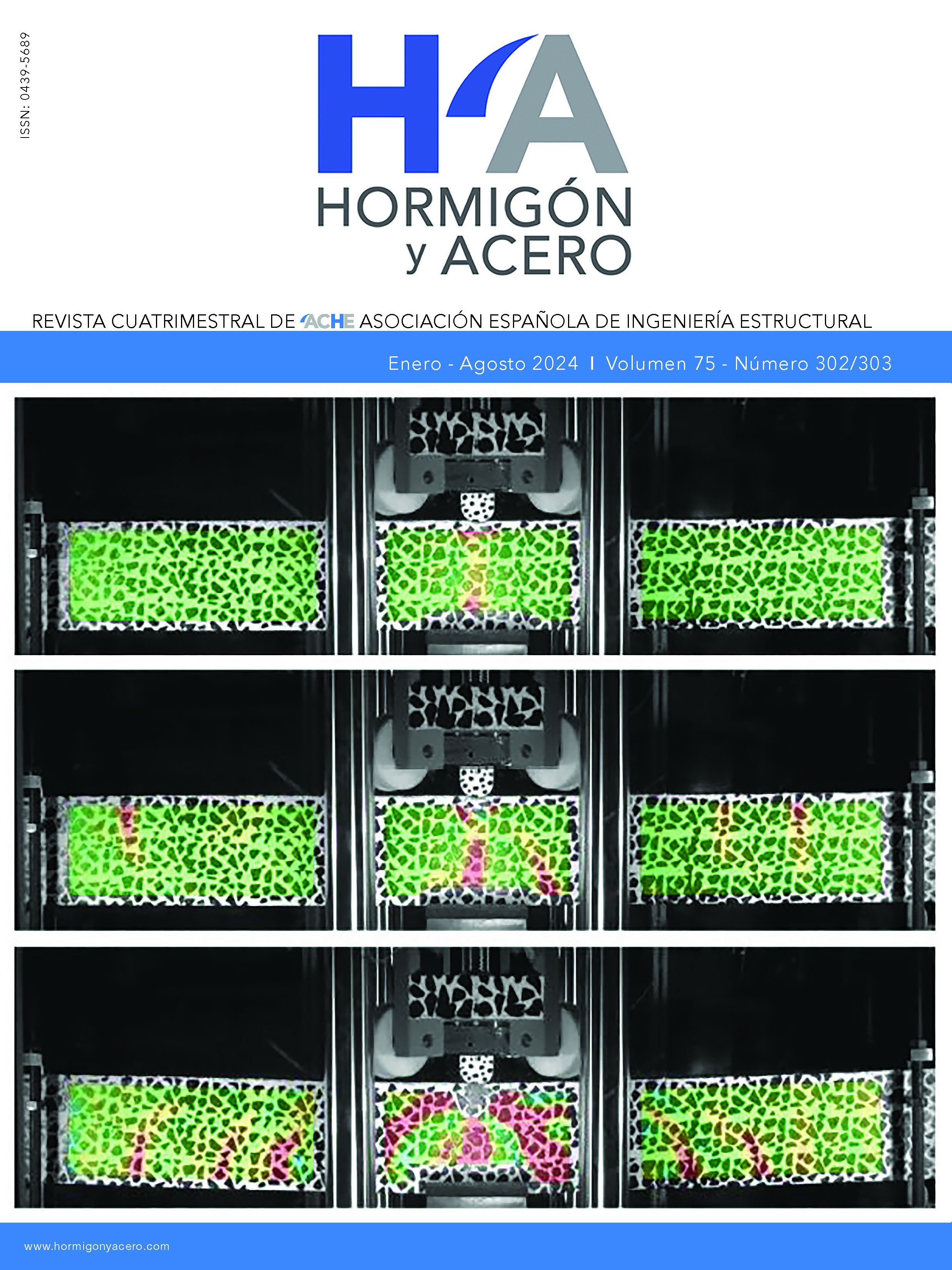Comportamiento del hormigón reforzado con fibras de acero conforme a la teoría de corte-fricción
Resumen
La cuantía del refuerzo tradicional de barras de acero en el hormigón armado se puede reducir mediante la adición de fibras. Este tipo de hormigón, con fibras de acero, se denomina hormigón reforzado con fibras de acero (HRFA) y permite la eliminación total o parcial de la armadura ante esfuerzos cortantes. Diferentes normativas consideran la capacidad estructural de las fibras de acero, para cualquier tipo de esfuerzo, en función de valores de resistencias residuales a flexión. No parece adecuado emplear estas resistencias para dimensionar el HRFA frente a solicitaciones de cortante, por lo que se desarrolló la presente investigación y se analizaron dos HRFA, solicitados a cortante, comparándolos con su estudio teórico en relación a la teoría de corte-fricción. Las fibras de acero cosen las fisuras impidiendo se desarrollen libremente, aumentando el rozamiento entre las caras de la discontinuidad. La parte experimental desarrolló ensayos de corte directo tipo “push-off” complementados con técnica de vídeo-extensometría para obtener las variaciones de deslizamiento y abertura de fisura. Se puede indicar que, en el estado post-fisuración, las fibras son las que gobiernan el comportamiento del material y que los resultados del modelo analítico son muy similares a los hallados en la campaña experimental para deslizamientos de hasta algo más de 4 mm.

